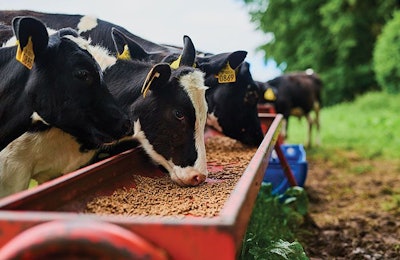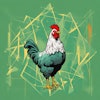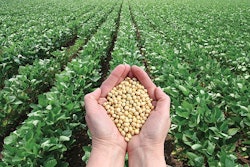
Feed is one of the most significant inputs to livestock production. Therefore, accurate assessment of the nutritional composition, as well as the behavior and fate of feed ingredients in the gut, is required for effective diet formulation.
Feed quality assessment is often thought of in terms of nutritional value and digestibility, for example, the traditional proximate analysis and near-infrared reflectance spectroscopy (NIRS). However, predicting the behavior and fate of nutrients from feed materials needs to consider the influence of the gut ecosystem, as well as the effect of varying combinations of different feed materials.
Traditionally, laboratory-based (in vitro) and animal-based (in vivo) methods are employed to evaluate the nutritional quality of feed. However, with a move away from the more invasive, animal-based techniques, in vitro approaches are becoming increasingly more sophisticated.
Types of ruminant feed evaluation
Numerous techniques are used in combination to derive nutritional value for individual feed materials, as well as combinations, e.g. a total mixed ration (TMR). One of the most basic is the Weende System, also known as proximate analysis. It is a relatively crude analysis that was developed in the 19th century. It divides the feed material into portions — moisture, ash, ether extract, crude protein, crude fiber — by subjecting the sample to different extraction methods. Finally, the sum of these portions is deducted from 100 to obtain the nitrogen-free extract — basically, anything that wasn’t extracted during the first five processes.
Despite being a crude, as well as laborious, guide to feeding quality, elements of the Weende system are still used in addition to more complex factors. The Van Soest system for assessing fiber fractions in feed has been in use for many years. By sequentially boiling feed samples in neutral and acid detergent, the level of cell wall material and its more digestible fractions can be estimated. The resultant fractions, neutral detergent fiber (NDF) and acid detergent fiber (ADF) give an indication of bulk and digestibility, respectively.
The Weende and Van Soest procedures are referred to as wet chemistry and require specific reagents and a lot of time to generate results. NIRS has become the analytical method of choice over traditional wet chemistry in the analysis of many feed materials, particularly forages. It is much more rapid and cost effective than wet chemistry and requires little sample preparation in contrast to wet chemistry. However, NIRS accuracy is reliant on a detailed database of samples and calibration for individual groups of material, e.g. grass silage, maize silage, grass.
The methods detailed above give a snapshot of the nutrient composition of a given feed material. Other, more complex techniques are required for more dynamic evaluations of feeding value. These techniques can be divided according to whether they are in vitro or in vivo. In vitro methods include gas production, dual-flow fermenters and the RUSITEC system, while the use of markers and the in sacco technique rely on the use of animals.
In vitro fermenters
- Gas production
The gas production technique was originally developed about 40 years ago and relies on measuring the amount of gas a feed sample produces when incubated with rumen fluid under anaerobic conditions. Ultimately, it is an indicator of how fermentable a feed is. It can also be used to aid prediction of metabolizable energy (ME) values for a given feed.
This technique can be used to evaluate effects of different rumen environments on feed ingredients and whole diets -- for example, inclusion of feed additives, anti-nutritional factors and specific combinations of feeds. Put simply, the feed sample is incubated with the rumen inoculum in bottles at ~39 C for periods of up to about 48 hours. Extent and rate of digestion can be assessed, which helps with prediction of intake and potential microbial growth.
In modern gas production systems, a pressure transducer measures the amount of gas being produced. Kinetic parameters can be calculated that describe the fermentation process and then these can be translated into meaningful biological data. There is an automated gas production system (Ankom RF Gas Production System, Ankom Technology) that has greatly improved the flexibility and scope of the technique. As well as exporting the gas data directly to a computer spreadsheet, it also allows for samples of gas to be taken for further analysis by gas chromatography (GC).
- Rumen Simulation Technique (RUSITEC)
The Rumen Simulation Technique is a simple fermenter system that can measure fermentation end-products, gas and methane production, degradability and microbial protein synthesis. It consists of a fermentation vessel with tubes allowing infusion of artificial saliva, as well as a sampling tube. While it is a useful simulation of the rumen and can be used to provide data on numerous aspects of feed material and rumen function, it doesn’t allow for the evaluation of feed in different scenarios, such an acidosis or slow rates of passage. Although being a highly standardized method, it is known to differ from in vivo conditions regarding absorptive processes, the ratio between liquid and solid materials, short-chain fatty acid (SCFA) concentrations and protozoal communities.
- Dual-flow continuous culture fermenters
An open system, continuous culture allows the incubation of feed in rumen fluid and removal of effluent from the fermenter while maintaining a constant environment in terms of pH and temperature. Leading on from this, the development of the dual-flow system accounted for the different outflow rates of liquid and solid fractions as would occur in the rumen. The fermenter could also now be “fed” at varying rates.
Dual-flow continuous culture consists of a central fermentation vessel with various ports allowing inflow and outflow of various substances to simulate a rumen environment. Solid and liquid effluent fractions can be collected separately, allowing evaluation of dietary effects on solid-associated bacteria (SAB) and liquid-associated bacteria (LAB).
Despite this, data from in vitro continuous culture systems should always be interpreted considering some of the limitations of the system. One of the main limitations is the lack of standardization between different systems, which can make comparison of the current work with other similar studies more complex. Lack of absorptive capacity has also been cited as a limitation compared with in vivo studies as end-products tend to accumulate that would otherwise be absorbed through the rumen wall. The environment within the fermenters is also controlled with regard to pH and temperature. While temperature is likely to be similar between in vivo and in vitro, rumen pH is heavily influenced by rumen conditions and background diet in vivo and is a dynamic parameter that is not controlled. Inocula source and quality can equally affect fermentation within the system, which may skew results.
In vivo methods
Measuring digestibility comes down to the basic equation of "what went in minus what comes out, divided by what went in”: nutrient consumed and nutrient in feces.
- Nutrient consumed
The resultant value, known as a coefficient, thus, gives an idea of how much of a given feed will end up being absorbed by the animal and can be used to estimate the true nutrient value of that feed. Digestibility trials usually consist of a period of adaption to the diet/feed in question followed by a sampling or experimental period, often around 5 days duration.
- Digestibility markers
One of the methods employed to calculate digestibility is the complete collection of feces over a given time frame and, together with a known intake, use it to estimate digestibility of a given feedstuff. This works if the feedstuff is the only ingredient in the diet but runs into problems if the diet is mixed, for example a total mixed ration (TMR). The use of indigestible markers affords us the ability to measure total tract digestibility without the necessity for complete fecal collection. As with most animal-based techniques it is time-consuming and expensive. Markers can be external (added to the feed/diet) or internal (an existing component of the feed) and should be completely unaffected by the digestion process yet remain associated with the material of interest. External markers include chromic oxide and ytterbium while internal markers, include n-alkanes, acid-insoluble ash and acid-detergent lignin. Marker concentration is measured in the feed and in the subsequent feces and the difference between the two can be used to predict digestibility. Markers are a good way of looking at dry matter digestibility.
- N balance
A nitrogen balance study measures where nitrogen is partitioned to calculate the amount of nitrogen retained in the body. Nitrogen is measured in the feed (this includes protein and non-protein sources of nitrogen) and then measured in the subsequent urine and feces (and milk in lactating cows). The amount of nitrogen excreted (i.e. nitrogen in urine and feces) is then subtracted from the amount of nitrogen consumed via the feed to calculate the nitrogen balance. This can give an idea of the digestibility, as well as the efficiency of nitrogen utilization. Urinary nitrogen is particularly useful in this regard as it can vary markedly with the feeding conditions in terms of dietary protein and nitrogen level.
- In sacco
The rumen liquor required for the in vitro methods described above usually comes from ruminally cannulated animals. These animals can also be used directly to assess the digestibility and degradability of feed in the rumen. Also termed the in situ or Dacron bag technique, the in sacco method has been in use for more than 40 years and involves placing a small amount of the feed or diet under investigation in porous bags and then incubating them in the rumen for a given period, usually around 24 to 48 hours. Multiple samples are usually dried and ground before being placed into bags made of a synthetic material with a specific pore size. Bags are then removed in sequence over time, washed and dried and the remaining amount of feed material quantified.
This method allows one to plot the disappearance of feed over time leading to a prediction of slowly and immediately degradable protein fractions in the feed at a given rate of passage through the rumen. Though this method has proved useful and is still used, there are inherent risks. Differences in bag size, material and pore size, as well as treatment of the bags after incubation can all increase the variability associated with the technique and, therefore, the interpretation of results across studies.
Additionally, just because a component has disappeared from a bag does not categorically mean it has been degraded which, again, increases the risk of error.
In conclusion
There are many more aspects and variations of both the in vitro and in vivo techniques used to assess the true feeding value and fate of various feeds and feed components and their description is beyond the scope of this text. All of the aforementioned techniques are valuable and using a combination of them will likely yield a more accurate assessment of feed ingredients compared with using one technique alone. Additionally, going forward, we are likely to move toward a reduced reliance on animals and invasive procedures to evaluate feeding value.
References available upon request.

















